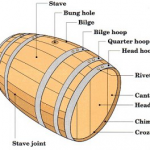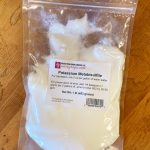Fall Foods to Pair with White Wine
As the air gets crisper, the leaves start changing color and you add layers to your wardrobe, you start to think of your seasonal favorites such as pumpkin EVERYTHING, apples and apple pie, turkey, roasted veggies and sweet potatoes.
But when it comes to pairing your wine with those delicious autumnal treats, where to begin?
Here are a few things to keep in mind when deciding which white wine to try with your fall favorites.
You might automatically think red wines when you think fall, but there are many white wines to choose from that really complement some great hearty dishes.
Choose Chardonnay or Viognier to have with your meats like chicken or turkey and a nice rich soup or bisque. Viognier also pairs well with butternut squash or carrot dishes. These wines also pair well with pumpkin flavors too such as pumpkin pie. Are you preparing some pumpkin bread? Choose a bubbly Moscato to pair with this fall treat.
And don’t forget the sweet potato fries! Pair them with that Chardonnay again; make it a un-oaked Chardonnay, so it doesn’t overwhelm the sweetness of those crispy treats!
Consider a Gewürztraminer or Vouvray when selecting an apple dish. The Gewürztraminer will be a nice addition to a plate of apple slices and add some cheese, while if you are looking to find a wine to have with a slice of apple pie, then you might prefer to pair with the sweeter Vouvray. Or if you are having an apple cobbler or baked apples, try serving it with a Riesling.
And you either love them or hate them, but Brussels sprouts are fresh in the fall and if prepared with just a bit of char, they pair really nicely with a good crisp Sauvignon Blanc.
No matter what fits your fall fancy when it comes to foods you enjoy as the days get shorter and the skies get darker earlier, but there is sure to be a wine to pair with it. Hopefully these pairings will give you ideas of what wine to purchase to complement your own autumnal specialties.
Written by Michelle Griffis aka the Nutmeg Nose for MWG
Source 1
Source 2
Source 3
Source 4
What size wine press do I need?
When deciding on what size press you need, ask yourself the following questions.
- How much do I have to press?
- How much can I press at once with the given size of the wine press?
- How long will each press cycle take?
As with the crushing/destemming part of winemaking (and pretty much every other part of winemaking for that matter), the setup and cleanup will represent a significant portion of the day, so you don’t want to plan on spending 8 hours presssing unless you feel like working a 12 hour day. In general you want to be able to get through the entire lot of wine or grapes in about 5 hours.
Keep in mind that when you’re pressing must it will be between 30% and 35% solids. As you fill the press most of the liquid will flow right through and out referred to as free run wine/juice. So the volume of the press is going to correspond to the volume of solids that need to be pressed. For example, if you have 100 gal of fermented must to press, that only corresponds to about 35 gals worth of solids. To press 35 gals of solids through the 40L bladder press (10.6 gal) you would need to run about 3 press cycles in order to get the job done. If you can run a full press cycle on the 40L bladder press in about 45 minutes – which, as it happens, you can – then this press will totally do the trick.
Now seems like a good time to define what we mean by “press cycle.” A full press cycle consists of filling the press, pressing, emptying the press and cleaning and sanitizing it for the next run. Now that you understand the press cycle, its time to figure out which press is right for you.
Keep in mind that times for running press cycles do vary based on the your equipment set up, amount of helpers you have, practice, preparation, and level of expertise. The two most time consuming parts of the process are 1) filling the press, and 2) actually pressing. With the bladder press this essentially consists of waiting for the bladder to fill…
Whole Grape To Must
It can vary but for most reds, we can expect that a ton of fresh grapes (2,000 lbs) will yield about 210-240 gallons of must which in turn yields about 120-130 gallons of finished wine. The variation comes from cluster size, stem size and ratio, amount of shatter, open vs. closed clusters, berry size, skin thickness, number of seeds, press pressure, etc.
Cage Size To Cage In Liters To Cage In Gallons
| Cage Size | Cage in Liters | Cage in Gallons |
|---|---|---|
| 15 | 5 | 1.3 |
| 20 | 10 | 2.6 |
| 25 | 20 | 5.28 |
| 30 | 30 | 7.92 |
| 35 | 50 | 13.20 |
| 40 | 70 | 18.5 |
| 45 | 85 | 22.45 |
| 50 | 130 | 34.34 |
| 55 | 170 | 44.90 |
| 60 | 220 | 58 |
| 70 | 330 | 87 |
| 80 | 550 | 145 |
Using these estimates:
2,000 lbs of whole grape times .1125 = 225 lbs of must and juice times .35 = 78.75 lbs of solid must
So for example, a 70 liter press will press 87 pounds of solid must in one press so it could do around 2,000 lbs of whole grape that was 225 lbs of must and juice.
Now that you know how to size up your press, check out our posts about choosing your style of wine press, using rice hulls at press, and our wine pressing video.
How to Pick Your Style of Press
Using Rice Hulls While Pressing Your Wine
For more information and pricing on wine presses offered at MWG please emal sales@juicegrape.com
Fall Foods to Pair with Red Wine
It’s that season! The air is getting crisper, the leaves are starting to change color and your mind is turning to those seasonal favorites such as pumpkin EVERYTHING, apples and apple pie, turkey, roasted veggies and sweet potatoes.
But when it comes to pairing your wine with those delicious autumnal treats, where to begin?
Here are a few things to keep in mind when deciding which red wine to try with your fall favorites.
Venison, lamb or beef stew pair nicely with a Red Bordeaux, Barbaresco, or Barolo. Another favorite dish in the autumn season is sweet potatoes. Pair yours with a rich red Zinfandel or if you are having more of a mashed version, enjoy it with a red blend or a lighter Pinot Noir.
Choosing a hearty vegetable stew with mushrooms or fig and goat cheese on almost anything, especially a pizza, also taste better when they are paired with a Pinot Noir. As it is so versatile, Pinot Noir also goes well when had with pork as well.
When considering meals during colder temperatures, comforting side dishes such as butternut squash risotto go nicely with a lighter Italian Dolcetto. Or a great bowl of Sausage Bolognese goes well with Sangiovese or Barbera.
Another favorite dish to indulge in even more so when the temperatures drop is a hearty chili. Serve it with a nice Malbec that will hold up well against all the flavors of the chili.
If you make a short ribs dish braised with vegetables that are cooked in red wine or something such as cheddar mashed potatoes, you can pair these with a Pinot Noir or Merlot. These red wines are medium-bodied and will add to the earthy flavors of these items.
And don’t forget desserts in the fall. That slice of pumpkin pie would be even sweeter with a glass of barrel-aged Port. Something to keep in mind, you typically want your wine to be sweeter than the dessert you are pairing it with. If a wine is too dry it will not taste as well with an overly sweet dessert.
No matter what you make in your lineup of fall favorite dishes, there is certainly a red wine to pair with it. Hopefully these gave you some ideas as you plan your autumn menu and go shopping for your wine; or better yet, see what you have in your own cellar.
Written by Michelle Griffis aka the Nutmeg Nose for MWG
Source 1
Source 2
Source 3
Source 4
How to Select the Right Cork for Your Wine
Now that you’ve made that special wine, you are going to want to bottle it and store in your wine cellar. And during that process, you will need to cork your wine as well.
How do you choose which cork to use?
Let us help you with that decision. Here are the four types of corks we offer and some details about each one:
- Natural
- Colmated
- Micro Agglomerated
- Agglomerated
Natural Corks
Natural corks are one piece and they come in grades (based on surface, water content, porosity, and visual inspection) and typically the best choice in most cases.
Aging: This cork, due to its spongy flexibility, is the one to use for aging wine beyond five years because it keeps its seal viable the longest.
Colmated Corks
Take cork from a natural cork stopper and fill its pores with glue and cork dust and you have a colmated cork.
Aging: This cork is good for medium aging, looks smoother and glides out of the bottle when you pull them.
Micro Agglomerated Corks
Micro-agglomerated corks are made and treated with granules using a steam-based process to remove TCA and other potential contaminants. This is considered a technical cork because of the process that has been used to make these corks, but it still keeps up the popular appeal of a traditional natural cork.
Aging: This cork is suitable for wine with some complexity but usually for wine with an estimated time to consume being about two years after bottling.
Agglomerated Corks
This cork is cheaper, pretty dense and made with cork dust and glue.
Aging: This cork is good for low bottling time wines so usually not used for wines that age for more than a year.
We hope this information helps you to choose the right cork for your wine. If you have any questions about our corks or which one you should choose for your particular wine or wines, please don’t hesitate to reach out and ask us for our advice. We are here to help you. Email sales@juicegrape.com or call 877-812-1137













Recent Comments